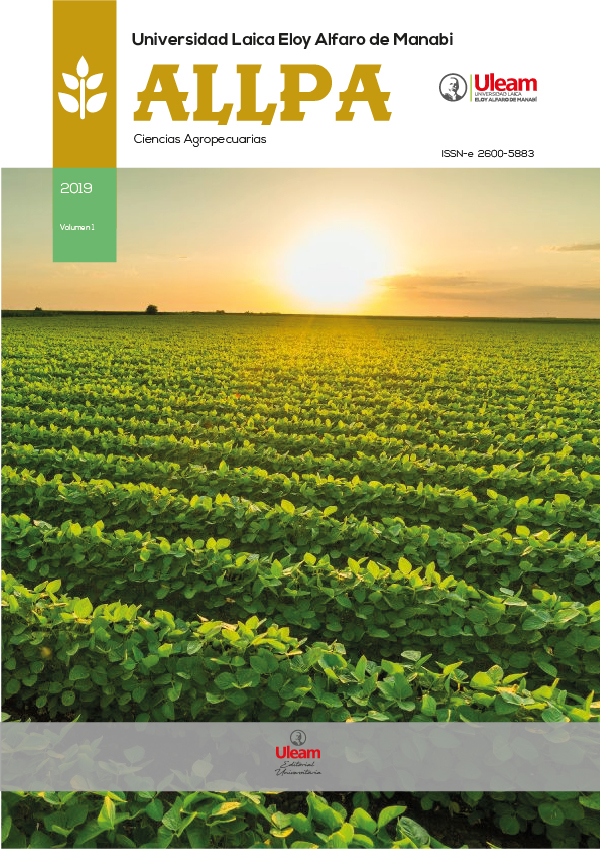Effect of soaking and heat treatments on the physical, chemical and functional characteristics of Vigna unguiculata and Lupinus mutabilis sweet
DOI:
https://doi.org/10.56124/allpa.v8i16.0121Keywords:
cooking, high pressure cooking, absorption, emulsion, foaming estabilityAbstract
The increase in population requires greater food production. However, the production of proteins of animal origin requires the use of more resources in relation to vegetable proteins. Cereals and legumes are sources of protein for human nutrition, which could partially replace proteins of animal origin. Native crops of cereals and legumes also allow us to strengthen the food security of the regions from which they come, such as lupine (Lupinus mutabilis sweet) and canario beans (Vigna unguiculata). In the present study, the effect of soaking and thermal treatment (cooking and high-pressure cooking) on the physical, chemical and functional characteristics of bean and lupine seeds and flours was evaluated. The results showed that the soaked grains had a greater mass and greater hydration capacity than those that were not soaked prior to heat treatment. Bean and lupine flours subjected to soaking and heat treatment showed low foaming capacity but high foaming stability. Regarding the chemical composition, only the lipid content showed dependence on the soaking-thermal treatment combination, with the lipid content being higher for the samples that were subjected to soaking.
Keywords: cooking, high pressure cooking, absorption, emulsion, foaming estability.
Downloads
References
Abdallah, N., Ibrahim, H. & Ali, H. (2021). Evaluation of some lupine genotypes based on genotype by trait (GT) biplot analysis and study the effect of soaking and cooking treatments on some physical and chemical properties of seeds. Scientific Journal of Agricultural Sciences, 3, 133-144. https://doi.org/10.21608/sjas.2021.95513.1153
Acuña, O., & Simbaña, C. (2010). Estudio de las propiedades físicas y funcionales de un hidrolizado enzimático de proteína de chocho a escala piloto y su aplicación como fertilizante. Revista Politécnica, 29, 78-85. https://revistapolitecnica.epn.edu.ec/ojs2/index.php/revista_politecnica2/article/view/273
Aguilera, Y, Estrella, I, Benitez, V, Esteban, R & Martín-Cabrejasa, M. (2011). Bioactive phenolic compounds and functional properties of dehydrated bean flours. Revista Food Res. Int., 44, 774–780. https://doi. org/10.1016/j.foodres.2011.01.004
Carović-Stanko, K, Maloić, M, Pintar, J, Liber, Z, Radosavljević, I, Bedeković, D, Guberac, S, Očić, V & Lazarević, B. (2018). Nutritional quality of phaseolin types and morphotypes of green bean (Phaseolus Vulgaris L.). Revista Agrociencia, 52, 523–537.
Castro, G., Naranjo, C., & Rodríguez, J. (2019). Huella Hídrica de productos regionales: el caso de la cachama blanca (Piaractus brachypomus). Revista Luna azul, 48, 1-22. https://doi.org/10.17151/luaz.2019.48.1
Costa, C. (2020). Destrucción del Amazonas: las principales amenazas para la mayor selva tropical del mundo en los 9 países que la comparten [Artículo de prensa]. https://www.bbc.com/mundo/noticias-america-latina-51377234
Curti, C., Alcócer, J., Rivas, M., Vinderola, G., & Ramón, A. (2022). Harinas de lupino blanco (Lupinus albus) y andino (L. mutabilis) aptas para consumo: características físico-químicas y funcionales. DIAETA, 40, e22040011. http://www.scielo.org.ar/pdf/diaeta/v40n177/1852-7337-diaeta-40-177-106.pdf
Cueva P. (2018). Evaluación de la sustitución parcial de la harina de trigo con harina de lupino (Lupinus mutabilis sweet) para la elaboración de pan [Tesis, Universidad Central del Ecuador]. https://www.dspace.uce.edu.ec/entities/publication/86946107-9432-46ce-b8d9-7ef768b3c1ac
Espejo, L. (2017). Desarrollo del proceso comun de desamargado de Lupinus mutabilis sweet (tarwi) en condiciones controladas físicas y químicas [Tesis, Universidad Mayor de San Andrés]. https://repositorio.umsa.bo/bitstream/handle/123456789/18188/M-307.pdf?sequence=1&isAllowed=y
FAO. (2020). Día Mundial del Agua. https://www.fao.org/americas/noticias/ver/es/c/229495/
Flores-Fernández, F., Durán-Lugo, R., Leal- Martínez, M. & Báez-González, J. (2022). Cereales y legumbres: Alternativas a la Carne Roja desde la Perspectiva del Valor Biológico y la Salud. Investigación y Desarrollo en Ciencia y Tecnología de Alimentos, 7, 13-19. http://eprints.uanl.mx/23435/1/01.pdf
García, O; Aiello, C; Peña, M; Ruiz, J & Acevedo, Y. (2012). Caracterización físico-química y propiedades funcionales de la harina obtenida de granos de quinchoncho (Cajanus cajan (L.) Millsp.) sometidos a diferentes procesamientos. Revista UDO Agríc., 12, 919–928
García, Y., Cabrera, D., Ballestas, J., & Campo, M. (2019). Efecto de diferentes tratamientos térmicos sobre las propiedades funcionales de la harina de fríjol blanco (phaseolus lunatus l.) y la determinación de su potencial uso agroalimentario. Revista Inge Cuc, 15, 132-132. https://doi.org/10.17981/ingecuc.15.2.2019.13
Granito, M; Brito, Y & Torres, A. (2007). Chemical composition, antioxidant capacity and functionality of raw and processed Phaseolus lunatus. J. Sci. Revista Food Agr., 87, 2801–2809. https://doi.org/10.1002/ jsfa.2926
Halberstadt, J. (2018). Deforestación y perdida de especies en Ecuador. https://www.ecuadorexplorer.com/es/htmL/deforestacion-y-perdida-de-especies.htmL
INEN. (2013). Cereales y leguminosas. Norma NTE INEN 1560. https://www.normalizacion.gob.ec/
Jitngarmkusol, S., Hongsuwankul, J. & Tananuwong, K. (2008). Chemical compositions, functional properties, and microstructure of defatted macadamia flours. Food Chemistry, 110, 23-30. https://doi.org/10.1016/j.foodchem.2008.01.050.
Kai, M., Greis, M., Lu, J., Nolden, A., McClements, D. & Kinchla, A. (2022). Functional Performance of Plant Proteins. Foods, 11, 594. https://doi.org/10.3390/foods11040594
Khalid B. A., and S. B. Elharadallou. (2013). Functional Properties of Cowpea (Vigna Ungiculata L.Walp), and Lupin (Lupinus Termis) Flour and Protein Isolates. J. Nutr. Food Sci., 3, 1–6. https://doi.org/10.4172/2155-9600.1000234
Lin, T. & Fernández-Fraguas, C. (2020). Effect of thermal and high-pressure processing on the thermo-rheological and functional properties of common bean (Phaseolus vulgaris L.) flours. LWT-Food Science and Technology, 127, 109325. https://doi.org/10.1016/j.lwt.2020.109325
Miquilena, E, Higuera, A & Rodríguez, B. (2016). Evaluación de propiedades Funcionales de Cuatro Harinas de Semillas de Leguminosas Comestibles Cultivadas en Venezuela. Rev. Fac. Agron. (LUZ), 33, 58–75
Miranda-Villa, P., Marrugo-Ligardo, Y. & Montero-Castillo, P. (2013). Caracterización Funcional del Almidón de Fríjol Zaragoza (Phaseolus Lunatus L.) y Cuantificación de su Almidón Resistente. Tecno Lógicas, 30, 17-32. https://www.redalyc.org/pdf/3442/344234332002.pdf
OIT. (2017). Objetivos de Desarrollo Sostenible: Manual de referencia Sindical sobre la Agenda 2030 para el Desarrollo Sostenible. https://www.ilo.org/wcmsp5/groups/public/---ed_dialogue/---actrav/documents/publication/wcms_569914.pdf
Ortega, E., Rodríguez, A., David, A. & Zamora, A. (2010). Caracterización de semillas de lupino (Lupinus mutabilis) sembrado en los Andes de Colombia. Acta Agronómica, 59, 111-118. https://www.redalyc.org/pdf/1699/169916223012.pdf
Padilla, A. (2015). Efecto de diferentes tipos de cocción sobre el contenido en humedad, lípidos, proteínas y sales minerales de la caballa (Scomber) [Tesis grado, ULL San Cristóbal de La Laguna]. https://riull.ull.es/xmlui/handle/915/3187
Pino, A., Cediel, G. & Hirsch, S. (2009). Ingesta de alimentos de origen animal versus origen vegetal y riesgo cardiovascular. Revista Chilena de Nutrición, 36, 210-216. https://www.scielo.cl/pdf/rchnut/v36n3/art03.pdf
Quesada, D. & Gómez, G. (2019). ¿Proteínas de origen vegetal o de origen animal?: Una mirada a su impacto sobre la salud y el medio ambiente. Revista Nutrición Clínica y Metabolismo, 2, 79-86. http://dx.doi.org/10.35454/rncm.v2n1.063
Raikos, V., Neacsu, M., Russell, W. & Duthie, G. (2014). Comparative study of the functional properties of lupin, green pea, fava bean, hemp, and buckwheat flours as affected by pH. Food Sci Nutr., 2, 802–810. https://doi.org/10.1002/fsn3.143
Sanga, A., Majaja, B. & Kichonge, B. (2018). Physical and Mechanical Properties of Selected Common Beans (Phaseolus vulgaris L.) Cultivated in Tanzania. Journal of Engineering, 2018, 9. https://doi.org/10.1155/2018/8134975
Santacruz, S., Ruales, J. & Eliasson, A.C. (2003). Three underutilised sources of starch from the Andean region in Ecuador. Part II. Rheological characterization. Carbohydrate Polymers, 51, 85-92. https://doi.org/10.1016/S0144-8617(02)00140-6
Sharif, H., Williams, P., Sharif, M., Abbas, S., Majeed, H., Masamba, K., Safdar, W. & Zhong, F. (2018). Current progress in the utilization of native and modified legume proteins as emulsifiers and encapsulants—A review. Food Hydrocolloids, 76, 2–16. https://doi.org/10.1016/j.foodhyd.2017.01.002
Tizazu H. & Emire, S. (2010). Chemical composition, physicochemical and functional properties of lupin (Lupinus albus) seeds grown in Ethiopia. African J. Food Agric. Nutr. Dev., 10, 3029. 10.4314/ajfand.v10i8.60895
Vegas, R., Zavalet, A., & Vegas-Perez, C. (2017). Efecto del pH y cloruro de sodio sobre las propiedades funcionales de harina de semillas de Lupinus mutabilis sweet “tarwi” variedad criolla. Agroindustria Science, 7, 49-55.
Wani, I., Sogi, D., Wani, A. & Gill, B. (2017). Physical and cooking characteristics of some Indian kidney bean (Phaseolus vulgaris L.) cultivars. Journal of the Saudi Society of Agricultural Sciences, 16, 7-15. https://doi.org/10.1016/j.jssas.2014.12.002
Xu, Y., Thomas, M. & Bhardwaj, H. (2014). Chemical composition, functional properties and microstructural characteristics of three kabuli chickpea (Cicer arietinum L.) as affected by different cooking methods. International Journal of Food Science and Technology, 49, 1215–1223. https://doi.org/10.1111/ijfs.12419
Published
How to Cite
Issue
Section
License
Copyright (c) 2025 Revista de Ciencias Agropecuarias ALLPA. ISSN: 2600-5883.

This work is licensed under a Creative Commons Attribution-NonCommercial-ShareAlike 4.0 International License.


.jpg)










